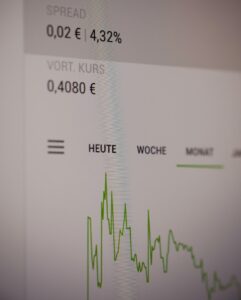Starting Forex Trading: Understanding the Basics
Forex trading, also known as foreign exchange trading, is the process of buying and selling currencies with the aim of making a profit. It is the largest financial market in the world, with trillions of dollars being traded every day. For beginners, entering the world of forex trading can be both exciting and intimidating. Understanding the basics is essential to navigate this complex market and increase the chances of success.
What is Forex Trading?
Forex trading involves the simultaneous buying of one currency and selling of another. Currencies are traded in pairs, such as the Euro/US Dollar (EUR/USD) or the British Pound/Japanese Yen (GBP/JPY). The value of a currency pair is determined by the exchange rate between the two currencies. Traders speculate on the movement of these exchange rates and aim to profit from the fluctuations.
Currency Pairs and Their Nicknames
There are three main types of currency pairs: major pairs, minor pairs, and exotic pairs. Major pairs include the most widely traded currencies, such as the US Dollar, Euro, Japanese Yen, British Pound, Swiss Franc, Canadian Dollar, and Australian Dollar. These pairs typically have high liquidity and tight spreads.
Minor pairs, also known as cross currency pairs, do not include the US Dollar. Examples include the Euro/British Pound (EUR/GBP) or the Canadian Dollar/Japanese Yen (CAD/JPY). These pairs are less liquid and may have wider spreads.
Exotic pairs involve currencies from emerging economies or countries with smaller financial markets. Examples include the US Dollar/South African Rand (USD/ZAR) or the Euro/Turkish Lira (EUR/TRY). Exotic pairs tend to have low liquidity and wider spreads, making them riskier for beginners.
Understanding Forex Quotes
Forex quotes consist of two prices: the bid price and the ask price. The bid price is the price at which the market is willing to buy the base currency, while the ask price is the price at which the market is willing to sell the base currency. The difference between the bid and ask price is called the spread. Traders must pay attention to the spread as it affects their overall trading costs.
For example, if the EUR/USD quote is 1.2000/1.2005, it means that you can sell one Euro for 1.2000 US Dollars or buy one Euro for 1.2005 US Dollars. The bid price is always lower than the ask price, creating a spread of 5 pips (0.0005).
Leverage and Margin
Leverage allows traders to control larger positions with relatively small amounts of capital. It is a double-edged sword that amplifies both profits and losses. Forex brokers offer leverage ratios, such as 1:50 or 1:100, which means that for every dollar in your trading account, you can control up to 50 or 100 dollars in the market.
Margin is the amount of money required to open and maintain a position. It acts as collateral for the leverage provided by the broker. Margin requirements vary between brokers and currency pairs. It is important to understand the concept of margin and the risks associated with it before starting forex trading.
Risk Management
Forex trading involves risk, and it is crucial for beginners to have a well-defined risk management strategy. One common risk management technique is to use stop-loss orders. A stop-loss order automatically closes a trade at a predetermined level if the market moves against you. This helps limit potential losses and protect your trading capital.
Another important element of risk management is position sizing. This refers to the number of lots or units you trade. It is recommended to never risk more than 1-2% of your trading capital on any single trade. By properly managing risk, traders can protect themselves from significant losses and preserve their capital for future trading opportunities.
Market Analysis
To make informed trading decisions, it is essential to analyze the forex market. There are two main types of analysis: fundamental analysis and technical analysis.
Fundamental analysis involves analyzing economic indicators, such as interest rates, GDP growth, employment data, and geopolitical events. It aims to determine the intrinsic value of a currency and its potential future movements based on economic factors.
Technical analysis, on the other hand, focuses on historical price data and chart patterns. Traders use various tools and indicators to identify trends, support and resistance levels, and potential entry and exit points. Technical analysis helps traders identify patterns and make predictions based on historical price behavior.
Conclusion
Starting forex trading requires a solid understanding of the basics. It is crucial to grasp concepts like currency pairs, forex quotes, leverage, margin, risk management, and market analysis. By building a strong foundation and continuously educating yourself, you can increase your chances of success in the challenging world of forex trading. Remember, patience and discipline are key virtues that every successful trader possesses.





